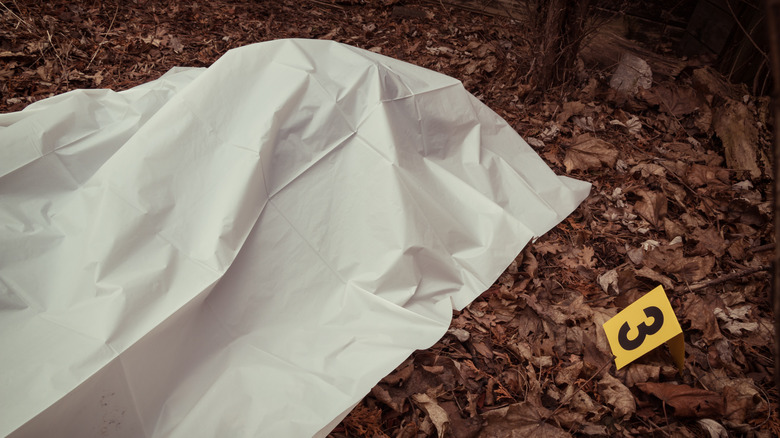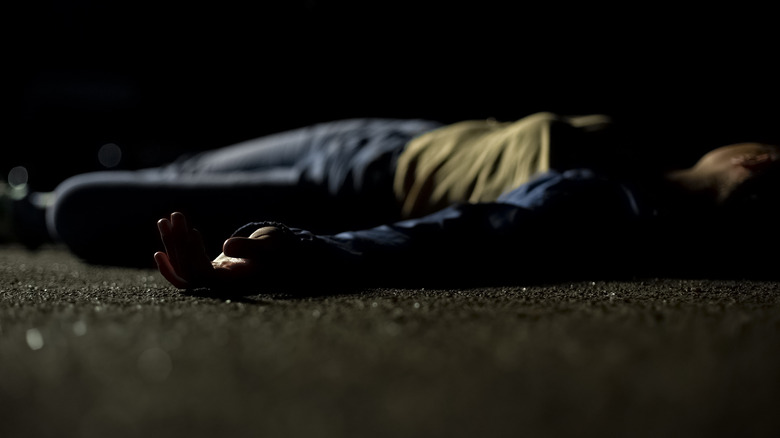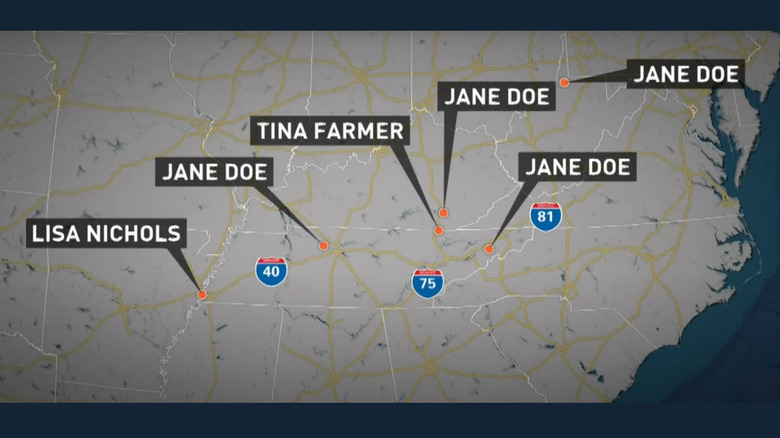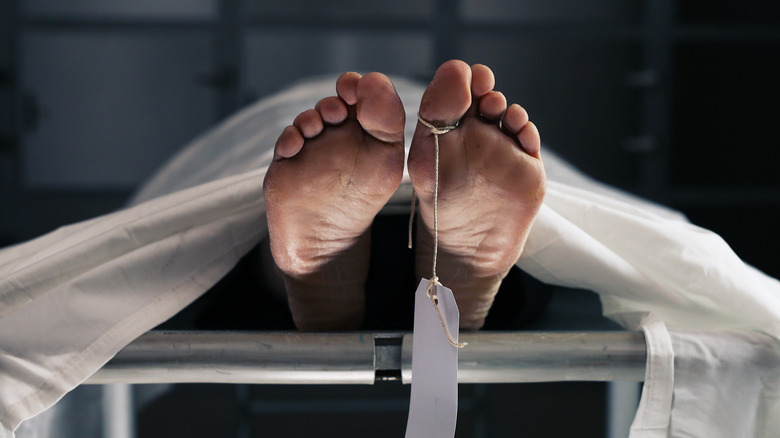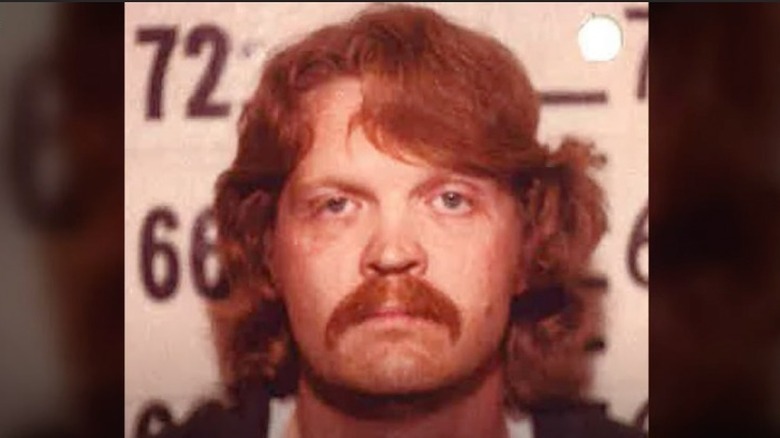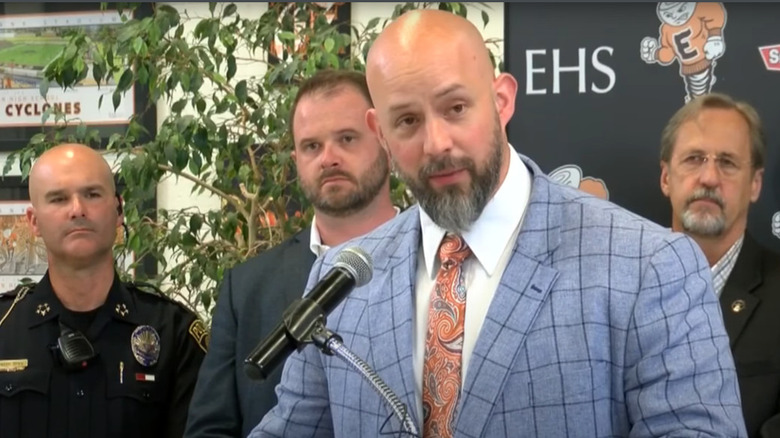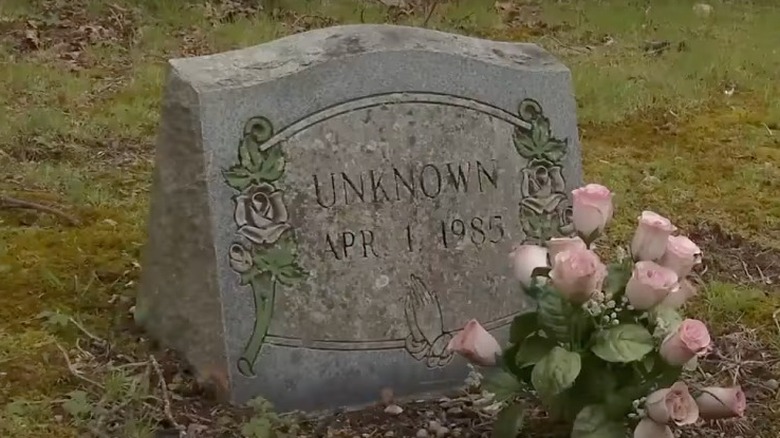Why The Redhead Murders Remain Unsolved
If the only thing you know about police work and criminal investigations comes from television, you might imagine that every crime is assigned to dogged professionals who devote all of their time to solving the case. You might also imagine that they have access to cutting-edge technology that makes every piece of evidence incredibly useful. As a result, you might in turn imagine that a serial killer case would get top priority, be worked diligently by passionate investigators, and be solved quickly.
The truth is, most law enforcement agencies are stretched thin in terms of budget and personnel, most officers are expected to work on multiple cases at once, and technology often moves too fast for local budgets to keep up. And defining a series of crimes as the work of a serial killer often takes time — as does solving the case. When this involves multiple jurisdictions and victims who are only vaguely connected, the challenge is even greater.
Between 1978 and 1992, several women with reddish hair were found dead along highways in Tennessee, Kentucky, Arkansas, Mississippi, West Virginia, and Pennsylvania. The consistent detail of red hair prompted law enforcement to consider the possibility of a serial killer, and the case was dubbed the Redhead Murders. Not only does the case remain open, but police aren't even close to closing it. Here's why the Redhead Murders remain unsolved.
Not enough people cared about the victims
It's long been noted that when it comes to crimes, the "type" of victim often determines how much urgency is behind the investigation. The New Yorker notes so-called "Missing White Woman Syndrome," for example, where white victims receive much more public attention and sympathy than victims of color.
This isn't always so obvious, however. As noted by InsideHook, the victims of the Redhead Murderer typically didn't have strong familial connections — there was no one looking for them when they went missing. And Front Page Detectives notes that many of the victims were homeless and may have made their living as sex workers. As noted by Knox News, the police described the victims as "lost in society." They were precisely the sort of people who were unlikely to even be reported missing.
That doesn't mean that individual officers didn't care or do their best to investigate the crimes, but the low social status of the victims, combined with a lack of grieving family members pushing for updates and media coverage to elevate the cases in the public eye, resulted in a lack of urgency. It's been speculated that there was simply no reason to devote extra time and resources to the investigations — as noted by journalist Shane Waters in an interview with A&E True Crime, the victims of these terrible crimes were viewed as "throwaways."
Technology wasn't good enough in 1985
Watching some police procedurals on television can give you the impression that every police agency in the world is blessed with a state-of-the-art lab where world-class scientists coax damning information from the tiniest pieces of evidence. That's led to what The New Yorker dubs "The CSI Effect," where juries expect to hear this sort of technologically advanced evidence and have too much faith in crime labs to offer certainty in crime investigations.
But even if a law enforcement agency is well-funded, they can't time travel. As noted by WBIR, when police began investigating the Redhead Murders in the 1980s, DNA analysis wasn't available. As A&E True Crime explains, when the first murders were investigated, the best technology available to most police was blood-typing, which is very limited in what it can tell investigators. In fact, several victims weren't identified until as recently as 2018.
The lack of robust and reliable genetic testing means many victims will never get justice. In 2019, WBIR reported that a truck driver named Jerry Johns was strongly linked to the murder of one Redhead Murders victim, Tina Marie McKenney Farmer. But it took so long to establish the link using DNA samples that Johns had already died in prison, so he can never be tried for the crime — and may never be definitively linked to the other victims.
There were a lot of agencies involved
The Redhead Murders started some time in the late 1970s or early 1980s and ended as late as the early 1990s — so many victims remain unidentified that it's difficult to define the serial killings with any certainty. The murders were also committed in a very wide geographical area, stretching through six states: Tennessee, Kentucky, Arkansas, Mississippi, West Virginia, and Pennsylvania. One reason the murders remain unsolved? The large number of law enforcement agencies involved.
As noted by Knox News, because the murderer potentially crossed state lines to kill his victims, the Federal Bureau of Investigation is involved, along with all those state agencies. That means at least seven law enforcement agencies working separate investigations, with all of the state agencies lacking jurisdiction or authority outside their own state lines. And as noted by A&E True Crime, these investigations now stretch over nearly four decades. The result is pure confusion: The various police departments can't even agree on how many victims are involved, with some pegging the number at six and others believing the Redhead Murderer killed as many as 11 women.
And there's still no cohesive plan. In 1985, five states and the FBI got together to form an unofficial task force on the Redhead Murders, an "ad hoc" gathering more about sharing information and codifying the list of official victims than coordinating an investigation. It was the last time any such coordination was attempted.
These murders aren't uncommon
When you read a headline about the Redhead Murders and learn about a potential serial killer, it's a chilling discovery. The idea that someone could be traveling up and down our nation's highways murdering women solely because of a superficial physical trait is legitimately terrifying.
But, sadly, Knox News points out one major reason these crimes haven't been solved: They're not actually all that uncommon or unique. Our highways are dangerous place, especially for women. The Los Angeles Times reports that the Federal Bureau of Investigation believes there may be many serial killers working as long-haul truckers, and that they are responsible for the murders of hundreds of women whose bodies have been found alongside highways across the country. As noted by Mel Magazine, the long-haul trucking world offers a unique opportunity to sociopaths who want to kill — women hitchhiking or performing sex work are usually alone, they can easily be driven to secluded areas, and the trucker simply drives on after the deed is done. One serial-killing long-haul trucker, Bruce Mendenhall, even had a "killing chamber" in his truck cab filled with all the supplies he needed to murder people, according to the Courier & Press.
With the FBI believing there have been more than 750 murder victims along U.S. highways — and with a list of almost 450 suspects — it's not surprising that the Redhead Murderer has been able to slip through the cracks.
There was never evidence against the main suspect
One of the most surprising aspects of the Redhead Murders is that an arrest was actually made in connection with the crimes — but there wasn't enough evidence to link the suspect definitively.
Knox News reports that in 1985 a woman named Linda Schacke — who had red hair — met a truck driver named Jerry Johns at a club where she worked. According to WBIR, she agreed to recruit another woman and meet Johns and his brother for sex at his hotel. He produced a gun, told her he was a police officer, and abducted her. He choked her, beat her, and left her for dead — but she survived. Johns was arrested, and investigators described his personality as arrogant and condescending, which are traits shared by many serial killers. Eventually Johns served out the rest of his life in prison, but authorities were never able to charge him with any of the murders — in fact, according to author Dewaine A. Speaks in his book "Murder & Mayhem in East Tennessee," several of the Redhead Murders occurred while Johns was in jail, making it impossible that he's responsible for them all.
But WBIR reports that, in 2020, a grand jury found there was enough evidence to charge Johns with at least one killing — that of Tina Marie Farmer, finally identified in 2018. Johns had died in 2015, however, and so could not be punished for the crime — or interrogated.
The transient nature of the victims — and the killer
One major reason the Redhead Murders remain unsolved is the logistics behind the killings. For one, as noted by Knox News, the victims who have been identified weren't native to the area where they were killed — many were hitchhiking or homeless, moving around on a constant basis. That made identifying them difficult. Additionally, InsideHook reports that the bodies were dumped alongside interstate highways, meaning they were most likely transported after they were killed, erasing even more connections that might assist investigators.
The placement of bodies along highways is also a complicating factor, because it indicates a killer on the move. This seems to imply that the murderer could be a long-haul trucker — and the only plausible suspect connected to the case so far, Jerry Johns, was in fact a truck driver. But, as noted by author Ginger Strand in her book "Killer on the Road," the Federal Bureau of Investigation has never made that an official part of its profile because truckers aren't the only drivers using those roads. Literally anyone with a vehicle could be the Redhead Murderer. Until more of the victims are identified and links are found to potential suspects, there won't be much progress in the case.
Many unrelated killings were mistakenly included
One of the most challenging aspects of the Redhead Murders is figuring out exactly how many victims there actually were. The mobile nature of the crimes and the fact that practically the only thing connecting the victims was their reddish hair means it's not easy to say with any accuracy whether a specific homicide victim should be considered one of the Redhead Murders.
As WBIR reports, when law enforcement agencies from the states involved began to compare notes, it soon became clear that not all of the victims were related. In other words, some of the women included as victims of the Redhead Murderer were likely killed by someone else. That doesn't mean their deaths shouldn't be investigated, but it does complicate the hunt for the person responsible for the Redhead killings. According to the Schenectady Gazette, the law enforcement agencies dealing with these killings were well aware of the confusion, and organized a meeting in 1985 to discuss the Redhead Murders. One result of this meeting was the realization that some of the victims associated with the Redhead Murders shouldn't have been. AP News reports that during the 1985 meeting, five victims (four found in Texas and one in Ohio) who had been considered possible Redhead Murder victims were dropped from the list because the evidence linking them just wasn't there.
There's no clear profile of the victims
When the phrase "serial killer" is used, it comes with some assumptions. One of those assumptions is that the victims have a "profile," a set of common characteristics that draw the killer to them. While all of the potential victims in the Redhead Murders (sort of) have one obvious thing in common, there's actually very little linking them or suggesting a pattern.
As psychologist Katherine Ramsland noted in Psychology Today, when the Federal Bureau of Investigation (FBI) became involved in the case in 1985, their analysis turned up "significant inconsistencies" among the victims, such as "the state of dress and evidence of sexual activity." According to AP News, those inconsistencies aren't minor: Some of the victims commonly attributed to the Redhead Murderer were found clothed, while others were nude. Some had engaged in sexual activity before their deaths while others hadn't. The manner of their death wasn't always the same. (Several — but not all — were strangled.)
Most importantly, only three of the victims were true redheads. The rest were either reddish-blond (aka strawberry blond) or didn't really have red hair at all. This doesn't mean there isn't a serial killer – A&E True Crime reports that, according to psychologist Joni Johnston, "the idea that serial killers wait for the perfect victim is overrated." But the lack of a clear pattern has hindered the investigation.
A medical examiner lost his license in scandal
Nothing derails an investigation like official shenanigans. One contributing factor to a lack of clarity regarding the Redhead Murders is professional malpractice.
According to InsideHook, in June 1992, it appeared that another victim of the Redhead Murderer had been found when the body of a nun named Vicki Sue Metzger — who had red hair — was discovered near a rest stop off of Interstate 24. After examining the corpse, Tennessee's state medical examiner, Dr. Charles Harlan, issued a report noting several links to the other murders. This was potentially exciting because the state could bring more modern technology and a sharper focus to the investigation.
Unfortunately, as noted by ABC News, Harlan was investigated for incompetence by the Tennessee Bureau of Investigation. Many of the autopsies Harlan had performed came under scrutiny as it was revealed that his conclusions were often not possible with the evidence available to him. He was eventually charged with gross negligence by the Tennessee Medical Board, along with numerous specific charges of fraud and unprofessional conduct. When Metzger's killer was arrested, there was absolutely no reason to think he was connected to the other murders, and the whole incident may have undermined the idea of a serial killer in the first place.
They may have been more than one killer
One reason the Redhead Murders case remains unsolved may be pretty simple: There might not be a single killer after all. The one suspect who seemed most likely to be guilty of the killings, according to WBIR, is truck driver Jerry Johns. In 1985, he was arrested after assaulting and attempting to murder a woman named Linda Schacke. Johns was later linked via DNA evidence to the murder of Tina Farmer, one of the Redhead Murderer's victims. But as noted by author Dewaine A. Speaks in his book "Murder & Mayhem in East Tennessee," other victims linked to the case were killed while Johns was in jail — meaning that even though Johns was undoubtedly a dangerous killer, he couldn't possibly be the Redhead Murderer.
There are two possible conclusions: Either Farmer was incorrectly included in the list of Redhead Murderer victims, or Johns wasn't acting alone, indicating a partner or simply another killer stalking the same stretch of highway. Considering the wide disparities between the victims noted by AP News, the idea that the Redhead Murders are actually the work of two or more killers with separate obsessions and techniques can't be ruled out. This might explain why more than 40 years after the first known victim was killed, there's been very little progress in the case.
People moved on
One big reason the Redhead Murders remains unsolved is simple: People forgot about the case, and law enforcement stopped working it — until recently, when a journalist and a group of students in Tennessee sparked fresh interest in the case.
As reported by WZTV News, a high school teacher named Alex Campbell in Elizabethton, Tennessee, gave his sociology class an assignment in 2018: Profile the killer in the Redhead Murders, whom the class dubbed the Bible Belt Strangler. At the end of the year, the class held a press conference to reveal the work they'd done, including a complete profile of the killer. At the time, only one of the victims had been identified. The work done by the class prompted a new wave of activity on the case.
Around the same time, A&E True Crime reports that investigative journalist Shane Waters began producing a series of podcasts about the Redhead Murders, further raising the case's profile and pushing authorities to take a fresh look at the killings using modern technology and new resources. This led to the most activity on the case since the 1985 gathering of law enforcement agencies and the aborted investigation into truck driver Jerry Johns, but it can't change the fact that, for decades, absolutely nothing was being done to solve these murders.
Several victims were only recently identified
One of the main reasons the Redhead Murders case remains unsolved is fundamental: time. Although nothing about the case is certain, the earliest possible victim dates back to 1978, and the most recent to 1992, according to Knox News. That means that the most recent killing linked with this serial killer or killers is now more than 30 years old. The only person ever seriously suspected of the crimes, truck driver Jerry Johns, died in 2015. That also means that if there were any potential witnesses who might shed some light on the murders, they may also have died long ago, taking their knowledge with them.
Exacerbating the time factor is how long it's taken to identify even some of the victims. As reported by WVLT News, two of the victims considered part of the Redhead Murders were only identified in 2018 — more than three decades after their bodies were found. As noted by A&E True Crime, at least two of the victims remain unidentified to this day. The long delays in identifying the victims have contributed to a lack of progress in the case. The Toronto Sun reports that the family of one victim, Espy Regina Black-Pilgrim, wondered for more than 30 years what had happened to her. Since they had no idea she was connected to the Redhead Murders case, they had no opportunity to influence it or supply police with information about Espy Regina.

